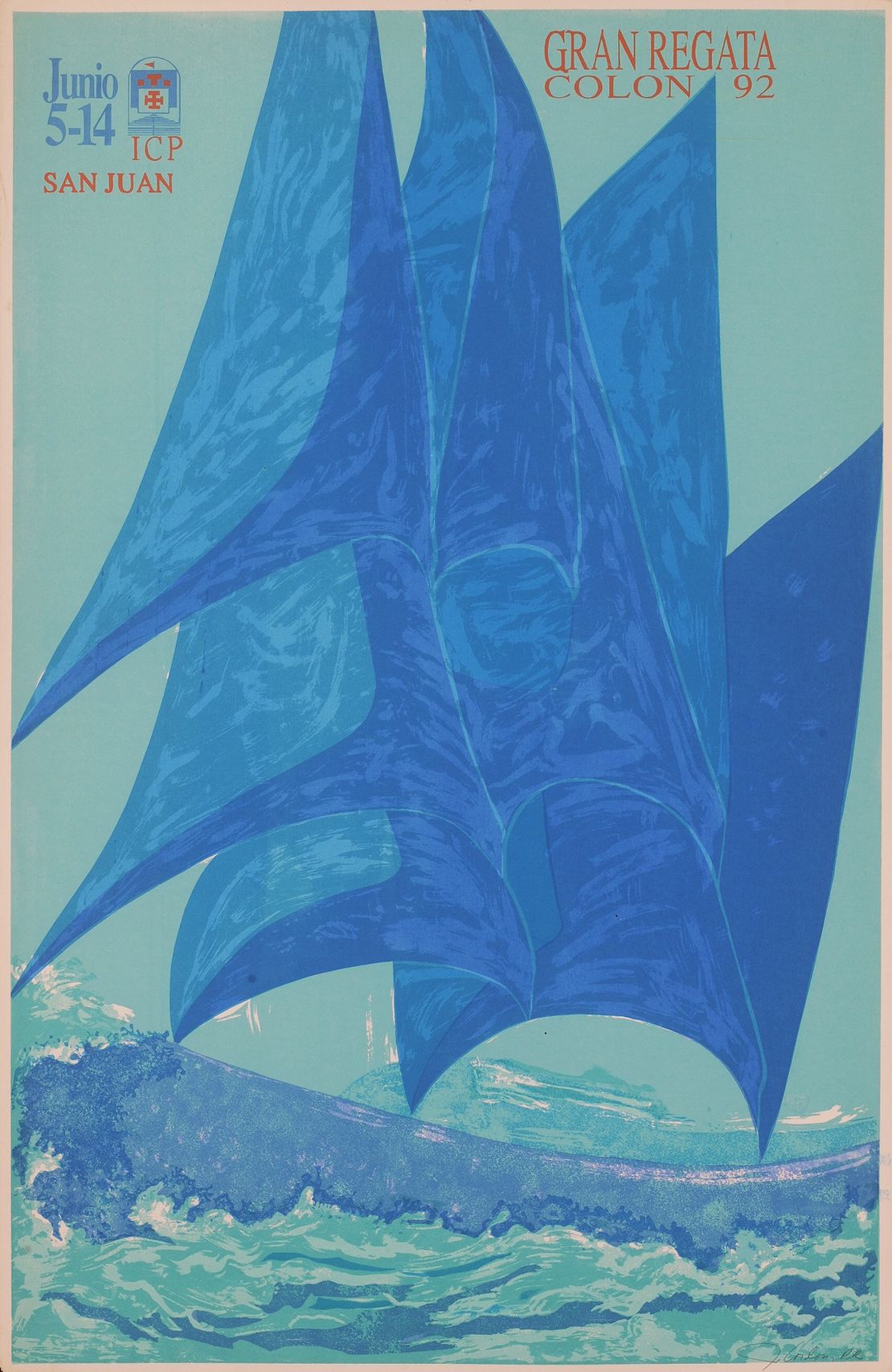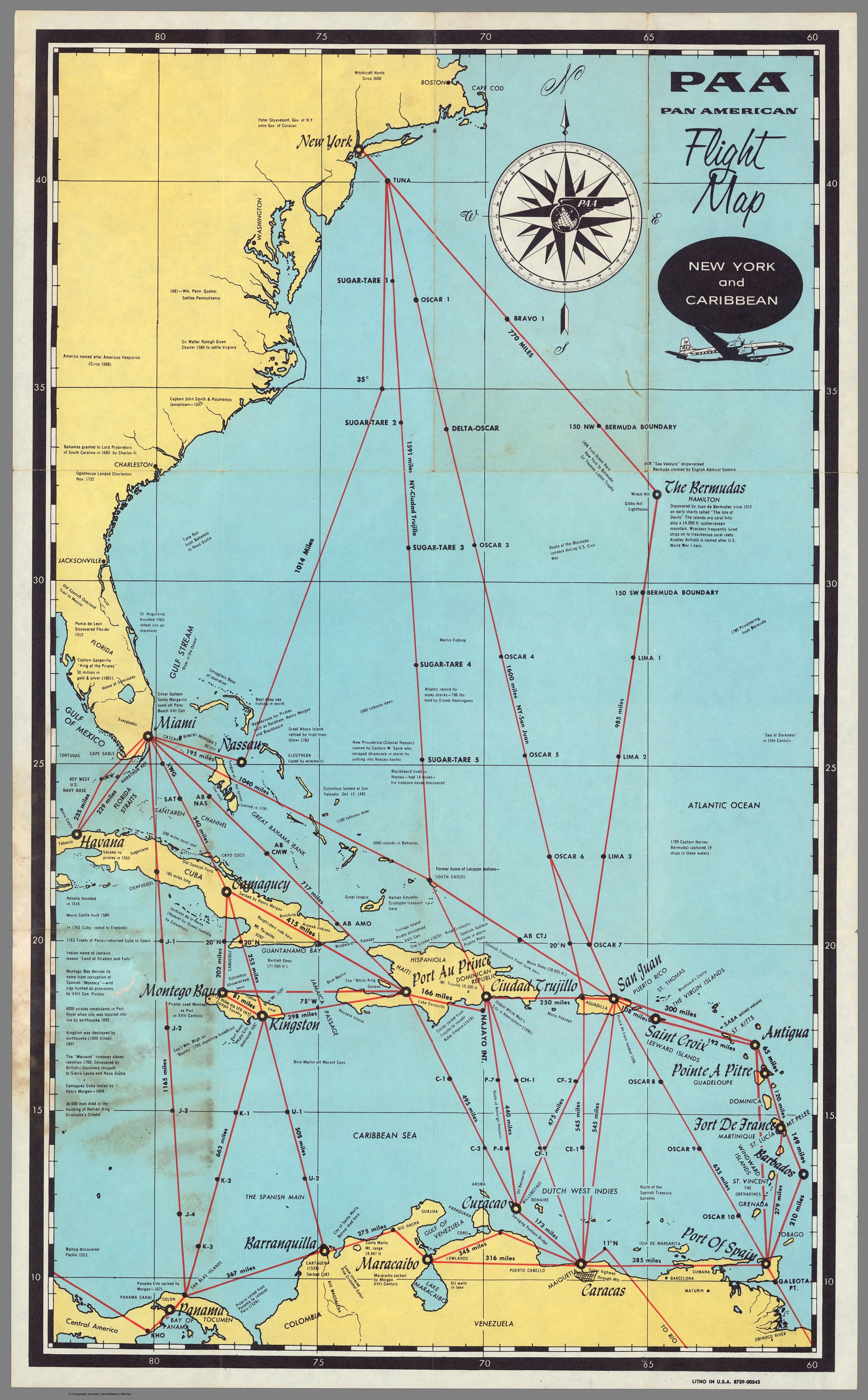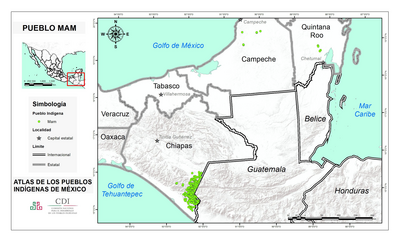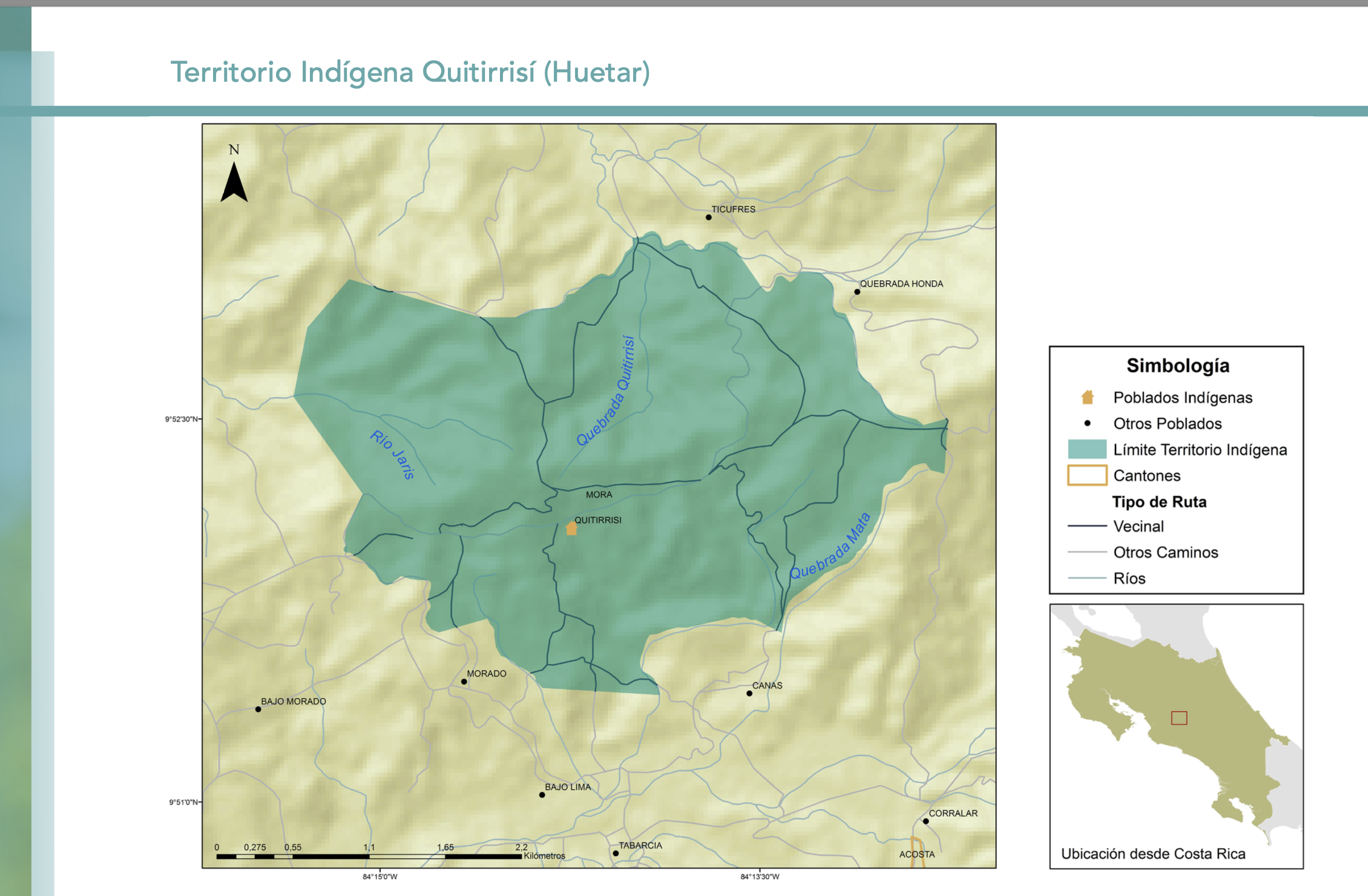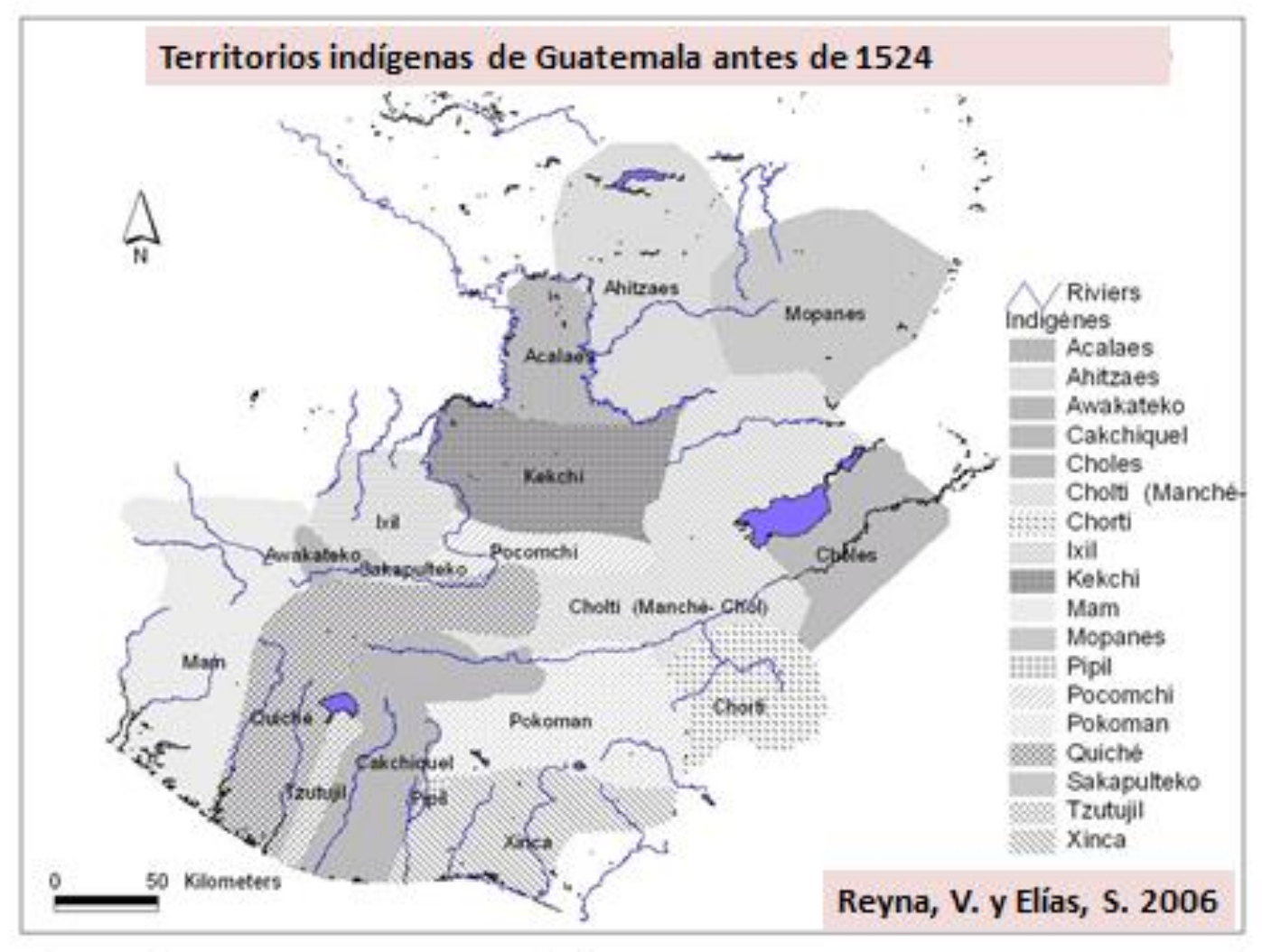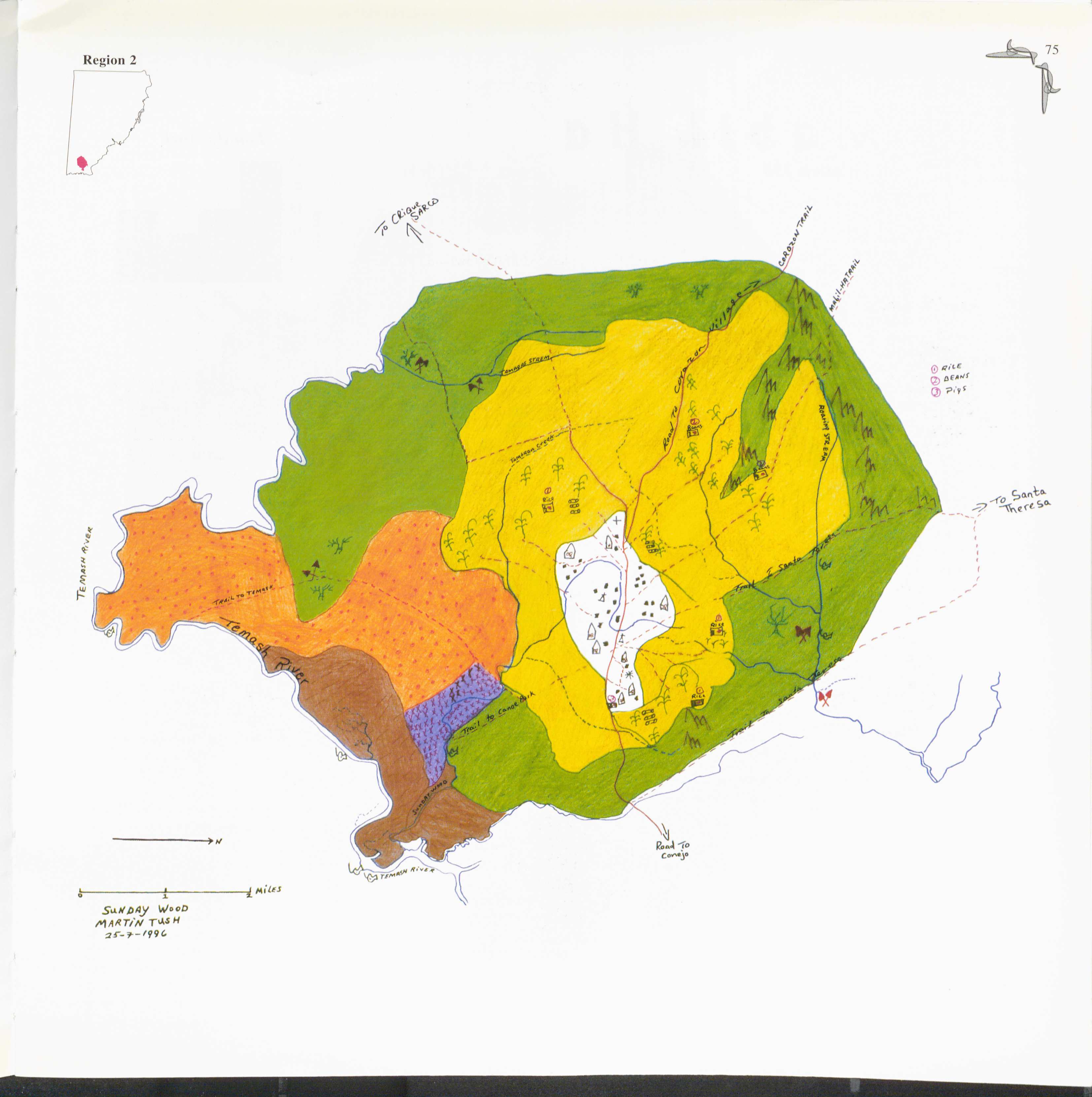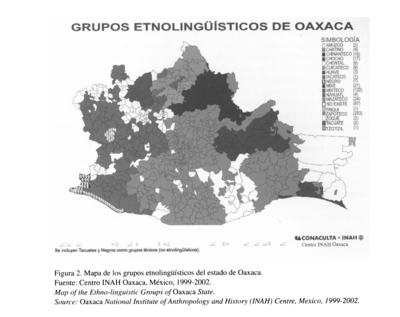Abstract
In 1992, Puerto Rico was the host of the Grand Regatta Columbus ‘92, an international event coinciding with the quincentenary of the beginning of Spanish colonization in the Caribbean. The Regatta was the last in a bountiful and deep-pocketed multi-year calendar of events emphasizing the Hispanic-Caribbean character of Puerto Rico, while stoking the benefits of the archipelago’s “special relationship” with the United States.1 This longstanding pose of Puerto Rico as the “best of both worlds” represented an ideal marriage of hispanophile Puerto Rican cultural “uniqueness” and American economic and political convenience, which are both principles associated with whiteness at the center of the Commonwealth ideal. Lost in the celebration of this whitewashed and seemingly homogeneous version of Puerto Ricanness, however, was a recognition –and exaltation– of difference among members of the Puerto Rican “family.” Officialdom portrayed Indigeneity as extinct in our islands, while Blackness was, more often than not, equated with slavery, or at best, relegated to the position of a folkloric “flavor;” that is, as something that had been overcome in favor of just being Puerto Rican.
As children of the 1990s, the Regatta is part of our generation’s collective core memories. Many still remember visiting the ships and buying their trinkets, the concerts and crowds of people gathered to watch the spectacle from El Morro, or the Russian sailor caught on TV crying as he bid farewell to San Juan.2 That sailor had enlisted in the Navy of the Soviet Union, a country that no longer existed. From geopolitical changes, globalization, war, and power realignments to discussions around identity politics and anticolonialism, the 20th century’s last decade was characterized by deep paradigm changes around the world. Ironically, this was also the time when multitudes of people in Puerto Rico’s main island gathered to celebrate the arrival of Christopher Columbus –a racist colonizer under the auspices of a racist Spanish monarchy.
Using the 1990s as our port of departure, we have worked together on Puerto Rico Negrx, an exhibition that defies the long-held Puerto Rican exceptionalist belief that the ambiguous ways in which we officially negotiate our coloniality exempt us from racism, having supposedly produced a “racially harmonious” democracy.3 In Puerto Rican culture and its national discourse, the issue of the archipelago’s political status tends to take center stage. When it comes to race, one often hears the phrase, “there is no racism in Puerto Rico.” Not only does this idea ignore and deny the daily experiences of Black Puerto Ricans, but it also serves a colonial purpose. It is often used to show how Puerto Rico is different from the United States: even if the islands remain a colonial site, at least there is “no racism here.”

RAMÓN BULERÍN
Canóvanas, Puerto Rico 1952
Los tres amigos
The Three Friends
1996
Acrílico sobre canvas / Acrylic on canvas
59 x 62”
Colección / Collection Museo de Arte Contemporáneo de Puerto Rico
Donación de / Gift of UBS, 2017
With a selection of works from the 1990s to the present, Puerto Rico Negrx showcases art by Afro Puerto Rican and Caribbean artists living in Puerto Rico and the diaspora. Puerto Rico Negrx has a precedent in the exhibition history of the islands. Paréntesis: ocho artistas negros contemporáneos [Parenthesis: Eight Contemporary Black Artists] was a 1996 exhibition organized by artist, writer, and curator, Edwin Velázquez. Produced independently, this exhibition included the works of Liz D. Amable, Ramón Bulerín, Jesús Cardona, Arleen Casanova Ferrer, Daniel Lind Ramos, Gadiel Rivera Herrera, Awilda Sterling Duprey, and Edwin Velázquez. Initially, the project was an open invitation to all Black artists in Puerto Rico. However, only eight artists accepted the call to assert their Blackness. They took the opportunity to express their culture, challenging the national construction of Puerto Rican identity, which favors a “hybrid” individual composed of Spanish, Indigenous, and African heritage, with an overwhelming emphasis on the first of these legacies.
With work ranging from drawings, sculpture, paintings, and prints, to installations, the eight artists of Parenthesis are included in Puerto Rico Negrx. Their works show the extent to which their practices relate to contemporary art discourses, including abstraction, loose figuration, and notions of the self. Some of the artists created new works for Puerto Rico Negrx, while others are participating with pre-existing works that had never been exhibited in a museum, or with pieces that were already part of the MAC’s collection. The museum took this opportunity to restore for current audiences works not publicly exhibited before, thus preserving art histories. Likewise, Puerto Rico Negrx is interested in exploring the nuances, and strength of art produced by self-identifying Black Puerto Rican artists.

DANIEL LIND RAMOS
Loíza, Puerto Rico 1953
Espíritu del corte
1996
Ensamblaje con objetos encontrados, creados e intervenidos / Assemblage with objects found, created and intervened
94 x 85 ½ x 17”
Colección / Collection Museo de Arte Contemporáneo de Puerto Rico
Donación de / Gift of Daniel Lind Ramos, 2017
Photo by Antonio Ramírez Aponte
As the first institutional exhibition presenting Black artists within a historical context and in intergenerational dialogue, Puerto Rico Negrx is also committed with showcasing the diverse and broad range of artistic media these artists work in. Taken together, the breadth of themes addressed by the works included in Puerto Rico Negrx is remarkably diverse: identity, community displacement, the transatlantic slave trade, marronage and other forms of resistance, spirituality, abstraction, food sovereignty, migration (forced or otherwise), post plantation histories, ancestrality and genealogy, and explorations on reggaetón and other forms of music, among others. Thus, the exhibition provides a multifaceted approach that celebrates the creative production of Black artists.
Artworks have many points of entry, possible interpretations, readings, and themes. Respecting this inherent multiplicity, we have not assigned titles to sections of the exhibition, but rather suggest interpretations and connections among the works through our groupings of pieces throughout the museum. The exhibition opens with several works providing a curatorial roadmap. Pieces from the 1990s, including by Jesús Cardona, Ramón Bulerín, Daniel Lind Ramos, Awilda Sterling Duprey and Edwin Velázquez, as well as by performance artist Javier Cardona, introduce how the artists at the time sought to confront sources of power or established conventions both aesthetically and thematically. Whether it was conservatism in the art world or how racist narratives are reiterated through the complicity of diverse actors and institutions in society, these works convey the artists’ active engagement among themselves and with the wider contemporary art world. We have included a selection of archival images, magazines, and CDs from the reggaetón archive Hasta ‘Bajo Project to further explore the realities of the period: a time characterized by tough-on-crime policies, police brutality, and censorship of so-called underground music, which evolved into the reggaetón of today, arguably the most popular genre in the world right now. Placed alongside them, are recent works by Kiván Quiñones and Glendalys Medina, signaling our interest in presenting works –and reclaiming them for Puerto Rican art history– in an intergenerational dialogue that is inclusive of the Puerto Rico diaspora. Moreover, Quiñones’s Seashell Telephone series of sculptures provides an evocative recurring motif for the exhibition. Seashells, or conch shells specifically, become symbols of the desire to relate across time, space, and the ocean, to literally call up an ancestor, or even more daringly, to imagine the possibility of a Black Atlantis.

Puerto Rico Negrx exhibition view. From left to right, artworks by: Javier Cardona, Awilda Sterling Duprey, Kiván Quiñones, Glendalys Medina and Edwin Velázquez. Photo by Raquel Pérez Puig.
The selection of works by artists Esteban Valdés, Juan Sánchez, Shellyne Rodríguez, Juanita Lanzó, Zuania Minier, and Luis Rivera Jiménez highlights a non-essentialist approach to nationality, the importance of solidarity across communities, and the ways in which Blackness constitutes the connecting throughline for their lived experiences. The creative struggle, whether confronting the vast whiteness of a piece of paper or considering the economics of being an independent artist under the Puerto Rican conditions of production, is present in works by Ramón Bulerín and Awilda Rodríguez Lora, as well as in the latter’s collaboration with Macha Colón, who directed the video SUSTENTO. In this piece, a digital version of Awilda speaks from the future of the thousands of performances she has done and the love she has experienced.

Esteban Valdés
Ciudad de Mexico 1947 - San Juan, Puerto Rico 2020
PUERTO RICO PARA LOS PUERTORRISUEÑOS
ca. 1967
Collage
3 x 11”
Colección privada / Private Collection
Photo by Raquel Pérez Puig
Musical traditions have long been associated with Blackness in Puerto Rico, but instead of overt references to musical genres, some of the artists in Puerto Rico Negrx incorporate music into their work in other ways. For instance, the title of Jesús Cardona’s drawing references a famous salsa song, while the sound of reggaetón’s beat-tinged Cantes del Piyayo from Sofía Córdova’s video piece fills the gallery space. Meanwhile, Esteban Valdés’s Homenaje a Nicolás Guillén incorporates musicality in the reverberation of hurtful words, and Awilda Sterling Duprey embodies music by collapsing musical compositions into those of her abstract drawings. Further on, a group of works by Juan Sánchez, Liz D. Amable, Nitzayra Leonor, Adriana Parrilla, Jesús Cardona, and Amber Robles Gordon present several reflections on the self –from how the artists choose to portray themselves, to their own coming to terms with family, heritage, racial impositions, and spiritual transformations.

Puerto Rico Negrx exhibition view. From left to right, artworks by: Juan Sánchez, Nitzayra Leonor, and Liz D. Amable. Photo by Raquel Pérez Puig.
The brutality of the transatlantic slave trade is made evident in Ángel Borroto’s monumental, altar piece-like triptych depicting slightly abstracted images of slave ship stowage plans. The manner of painting and layering of materials that make up the painted surface confirm the unimaginable levels of violence inflicted on the forced African Diaspora. These images of the Black Atlantic directly confront William Villalongo’s proposal of a Black Mediterranean and are seen alongside Arleen Casanova Ferrer’s print of human-shell hybrids and Ada del Pilar Ortiz’s relief sculptures of ghostly sugar cane, a reminder of the legacies of enslavement.

Ángel Borroto
La Habana, Cuba 1992
Reside en / Lives in Puerto Rico
Direcciones / pilares / estructura
Directions / Pillars / Structure
2022
Medio mixto / Mixed media
8 x 10’ c/u / ea.
Cortesía del artista / Courtesy of the artist
Photo by Raquel Pérez Puig
Spirituality, Afro Diasporic belief systems, and the aesthetics related to them are present in several of the pieces throughout the entire exhibition. Despite the Yoruba not being the predominant African ethnic group forcibly brought to Puerto Rico, their Ifá divination system, the pantheon of divinities known as orishas, and other color references associated with these traditions are a source of inspiration for many artists, whether they are initiated or not. Clotilde Jiménez’s collage of a self-baptizing figure seems fitting in this scenario –people who have decided to pledge allegiance to an empowering tradition, who seek spiritual connections as a form of reparation for the severed ties to their ancestors. A particular emphasis in the spiritual-aesthetic dimension and the desire to connect with their ancestors bring together works such as Altar afroboricua by Edwin Velázquez and the paintings on printed fabric from the Me llaman [They Call Me] series by Kiván Quiñones. Tony Cruz Pabón presents his meditations on drawing an afro, a treetop, and a cloud in the piece Nube [Cloud], which is accompanied by an inverted half-full glass of water, a popular measure to stop the rain. Three pieces by Gadiel Rivera address the history of maroons, spiritism, and syncretism in Puerto Rico. Ranging in mediums, and spanning from 1993 to 2023, the artworks are still unquestionably by the same artist, who builds on previous work to move elsewhere.
The themes of displacement and migration also loom large over the exhibition, as several artists were born in the United States, moved there –or to Puerto Rico– later in life, or have spent a significant period of their lives there, or in Puerto Rico. The concern with being able to remain in Puerto Rico is also significantly present, as many artists have been forced to leave due to gentrification or lack of minimally adequate work and life conditions. Some have also left to pursue their studies or new artistic endeavors in Latin America, Europe, or the US. Abroad, and upon coming back, they have faced varying racist experiences, as well as being misrecognized as something other than Puerto Rican. The works by Rogelio Báez Vega, Cielo Félix Hernández, Arleen Casanova Ferrer, and Jesús Cardona present the ever-more specific places where the artists are from, with accompanying tales of why they’re not there anymore.

Jesús Cardona
Dorado, Puerto Rico 1950
Los muñequitos del domingo
2010
Acrílico sobre tela / Acrylic on fabric
69 x 50”
Cortesía del artista / Courtesy of the artist
Photo by Raquel Pérez Puig
Another important concern present in the exhibition is food sovereignty. Gamaliel Rodríguez addresses the links to slavery of important crops, such as plantains and breadfruit, which are staples of Puerto Rican cuisine as well as a point of pride. Edgardo Larregui’s monumental human-sized crab trap is an homage to the culture around jueyes in coastal towns around Puerto Rico. Incorporating painting, sculpture, and crafts, as well as photo and audio documentation, La trampa exalts the ingenuity arising from necessity, the pride in the continuity of traditions, and the simply delicious flavors of a good crab stew. Meanwhile, Las Nietas de Nonó’s series of photos and the video Foodtopia are concerned with the colonial restrictions on our food supply, and the further complications faced by impoverished and racialized neighborhoods to ensure their sustenance. In the video, Las Nietas forage, harvest, and hunt, thus demonstrating an abundance of possibilities all around us to feed ourselves. Still, the tasks are arduous and time-consuming, while requiring great skill, creativity, and knowledge. Having worked all day, they cook up delicious sustenance as the night falls.
Towards the end of the exhibition, we have paired a sculpture by Jafet Cruz Cordero with a video by Pepón Osorio as final statements in Puerto Rico Negrx. Cruz Cordero’s piece, Engreñao (como me decía mi abuela), shows two defiantly big, elongated afro picks, as if saying “engreñao, so what?” The mood is markedly different in Osorio’s video. Displayed as a double projection on an inverted blackboard installed on the ceiling of the last gallery, the short video portrays a teenager, Jacob Rodríguez, the victim of a school closure in a Black and Latinx North Philadelphia neighborhood. The looped video shows Rodríguez writing, “Do I have to die for things to change?” on the blackboard, later erasing it with his bare hands and walking back to stare at us with a haunting look. The answer to this question, as we know, should always be “no.” Yet, we are aware of so many who have died for things to change, who have been killed for things to change. While this ending may seem somber, we agreed that it should be a sobering one. While we celebrate this project, we’re also aware of its limits, and the myriad of deep, societal changes still needed to combat overt and systemic, as well as implicit and ordinary, forms of racism and their implications.

Puerto Rico Negrx exhibition view with the video ReForm (Jacob) by Pepón Osorio in the foreground. Photo by Raquel Pérez Puig.
Puerto Rico Negrx, which also includes a series of performances, is part of a multi-year program of exhibitions and projects developed at MAC and offsite through MAC en el Barrio, the museum’s program for cultural equality and artistic commissions in communities throughout Puerto Rico. The exhibition is also the outcome of an ongoing examination of the institution’s collection, which will result in transformative acquisitions.
In 2023, Puerto Rico Negrx opened within a different context than Paréntesis. In recent years, there have been a plethora of exhibitions presenting Black artists in the islands and abroad. Several continued to be organized by Edwin Velázquez, along with other cultural pioneers like Dr. María Elba Torres. This time around, many more artists accepted the call to proclaim their Blackness. Puerto Rico Negrx includes 39 artists and collectives engaging in a variety of disciplines, showing how issues of race and racialization continue to be contested spaces in need of more scholarship and curatorial commitment. This project seeks to live on beyond temporary exhibitions –both the foundational Paréntesis and the current Puerto Rico Negrx. We wish to extend the conversation further by expanding it in connection with international dialogues, while offering a discussion on Puerto Rican social and cultural specificities alongside their links with different planetary regions.
